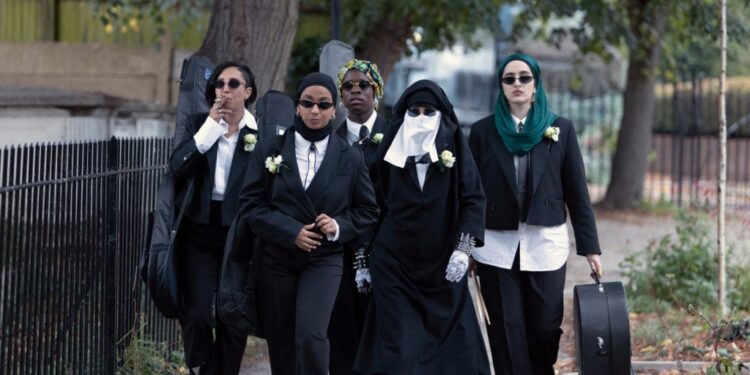The UK TV diversity monitoring project is to introduce questions around Jewish and Muslim identity for the first time, as Diamond‘s seventh report reveals minor diversity gains.
One of new Creative Diversity Network (CDN) CEO Miranda Wayland’s first moves in charge has been to announce an expansion of Diamond’s scope in a bid to create wider data sets and respond to global shifts. The move comes following a year in which the TV industry has battled with the ructions caused by October 7 and the ensuing Israel-Hamas conflict. A Film & TV Charity survey in February found that 94% of Muslim, Jewish and Arab people working in the film and TV sector had experienced a deterioration in their mental health since October 7.
“CDN’s role is to provide our partners with the most comprehensive set of diversity data and work with them to tackle barriers to inclusion and representation,” said ex-BBC and Amazon diversity exec Wayland, who started on September 1. “I’m pleased to be able to announce that going forward, we will expand the data Diamond collects by adding new questions on ethnicity, religious affiliation and socio-economic background.”
The next data set will also “highlight evidence showing whether freelancers and others from lower socio-economic backgrounds, with disabilities or from ethnic minority groups are disproportionately impacted by the current economic downturn in the industry,” added Wayland, coming off the back of James Graham’s MacTaggart, which focused on poor working class representation.
Elaborating on the changes, the Seventh Cut report said the broader questions will make the Eighth Cut “more nuanced and inclusive,” while adding a question on religion will allow for more data on an “additional protected characteristic, as we know that some religious groups experience a disadvantage.”
Minor gains
The Seventh Cut report showed minor diversity gains amid a tricky, contracted landscape, coming as senior figures raise concerns that the sector’s diversity push will be hit by the slowdown and destruction of the mid-range programing market.
Disability has been a major focus for broadcasters and producers over the past couple of years and one of the highest gains was in off-screen contributions from disabled people, which rose from 6.5% to 8% – although this is still miles behind national average. The figure is creeping closer to the doubling disability target set in 2018 to hit 9% off-screen representation that is now several years behind schedule. This year’s report broke down disability type for the first time, showing that learning and cognitive disabilities was the most common impairment type, accounting for nearly one third (31.1%) of total off-screen disability, while the least represented was blind or visually impaired at just 1.9% of contributions.
For the year to July 31 2023, Off-screen disability representation nearly caught up with on-screen, which rose only slightly from 8.2% to 8.7% of the circa-62,000 diversity contributions.
In terms of representation of people from Black, Asian and Minority Ethnic backgrounds, off-screen and on-screen both increased a smidgeon to 13.4% and 23.5% respectively – the former behind national average and the latter remaining well ahead. Strong on-screen representation was largely reflected in a “rise in the proportion of contributions made by those from Black, African, Caribbean and Black British backgrounds,” according to Diamond.
Following the recent riots sparked by the Southport stabbings, South Asian representation in TV was spotlighted, as multiple South Asian execs spoke to us about a lack of support from the sector.
The Diamond data showed little improvement in representation, with South Asians off-screen nudging up a tad to 2.6% and on-screen holding steady at 4.9% – figures that have barely improved since before the pandemic.
The CDN publishes the Diamond reports, which are backed by all major broadcasters.






